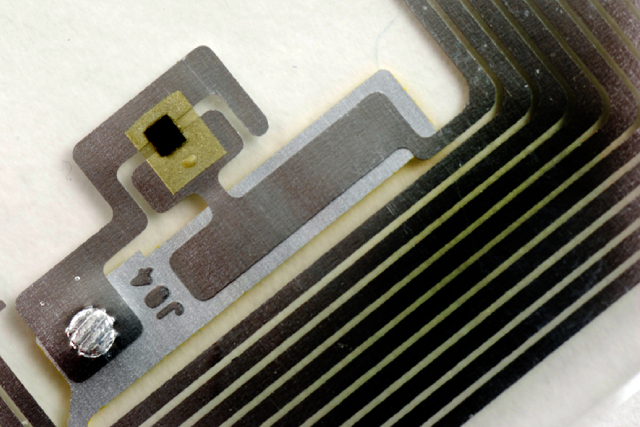How to Prevent RFID Tag Cloning & Secure Your Assets

Radio Frequency Identification (RFID) technology has revolutionised how organisations manage inventory, control access, and secure transactions. Integrated into a wide range of applications—from logistics and manufacturing to healthcare and retail—RFID offers unmatched efficiency in identification and monitoring.
However, as with any technological system, it has inherent vulnerabilities that must be addressed. One such significant and persistent threat is RFID tag cloning, which can undermine the integrity of access control, compromise sensitive data, and disrupt operational continuity. Understanding the mechanics of RFID cloning and implementing preventive strategies is essential to safeguarding digital identities and maintaining the trust and functionality that RFID systems deliver.
What Is RFID Tag Cloning?
RFID cloning is the process of duplicating the unique identification data stored within an RFID chip and transferring it to another tag or device. This allows malicious actors to replicate legitimate credentials and gain unauthorised access to assets, facilities, or information systems.
Typically, an RFID system assigns a distinct ID to each tagged item or individual, enabling precise tracking and identification. When this unique ID is cloned, the integrity of the system is compromised. The cloning process generally involves three key steps:
1. Skimming – A rogue RFID reader is used to intercept the signal from a legitimate RFID tag. These readers are inexpensive and readily available online.
2. Data Extraction – Specialised software is employed to analyse the intercepted signal and isolate the unique tag data.
3. Replication – The extracted information is programmed into a blank RFID tag, effectively creating a clone of the original.
This method is especially effective against low-frequency (LF) and high-frequency (HF) RFID systems that lack advanced cryptographic protections. In contrast, more modern implementations like RAIN RFID (Passive UHF RFID) use encryption keys to significantly limit cloning attempts.
Identifying Vulnerabilities in RFID-Based Infrastructure
Despite advancements in RFID technologies, numerous deployments remain susceptible to cloning due to architectural weaknesses and outdated standards. The following are common vulnerabilities found in many RFID or asset tracking system deployments:
- Lack of Encryption: Older RFID models often transmit data in plain text, allowing eavesdropping and unauthorised data interception.
- Fixed Unique Identifiers: Tags that rely on static identifiers are prone to replay attacks, where captured data is reused to gain access.
- Inadequate Authentication Protocols: The absence of multi-factor authentication increases the risk of credentials being exploited.
- Extended Read Ranges: Attackers can use long-range RFID readers to access tag data from several meters away, making covert attacks easier.
To secure an RFID system effectively, organisations must recognise and address these critical gaps.
Effective Strategies to Prevent RFID Cloning
Enhancing security across RFID applications demands a combination of hardware, software, and procedural interventions. The following methods are widely recognised as best practices in preventing RFID tag duplication:
1. Deploying RFID Shielding Technology
RFID-blocking cards, sleeves, and Faraday pouches can prevent unauthorised skimming by creating a barrier that disrupts electromagnetic signals. These passive RF shielding solutions are especially valuable for protecting high-value credentials such as key fobs and access control cards.
2. Integrating Strong Encryption Protocols
Adopting RFID tags and readers based on standards like ISO/IEC 14443 and MIFARE DESFire allows for the use of AES (Advanced Encryption Standard) encryption. AES supports 128-, 192-, and 256-bit key lengths and encrypts data in blocks, providing robust protection even for devices with constrained computing resources. When properly implemented, communication between the tag and reader requires mutual key verification, significantly reducing the risk of cloning.
3. Conducting Security Audits and Penetration Testing
Routine security assessments help identify and address weaknesses before they can be exploited. Engaging cybersecurity professionals to conduct simulated attacks against the RFID infrastructure provides actionable insights and supports the continual strengthening of security policies.
4. Implementing Multi-Factor Authentication (MFA)
Combining RFID credentials with secondary authentication methods—such as biometric scanning, one-time passwords, or PIN verification—creates an additional security layer that deters unauthorised access. This approach is widely adopted in sectors with high security demands, including finance and government.
5. Adopting Physical Unclonable Functions (PUFs)
PUF technology leverages inherent manufacturing variations in microchip structures to generate unique, unreplicable identifiers. Although still emerging, PUFs offer a promising hardware-level safeguard against cloning by making each chip physically distinct and immune to duplication. Their integration into future RFID tags could offer a new benchmark in tag security.
6. Upgrading Legacy RFID Infrastructure
Outdated RFID solutions that lack encryption and modern authentication capabilities pose a significant risk. Transitioning to next-generation systems with AES encryption, dynamic identifiers, and regular firmware updates ensures resilience against both current and emerging threats. An asset tracking system built on these modern standards offers more robust protection for high-value or mission-critical assets.
Conclusion
The rise of RFID technology has brought unprecedented efficiency to asset management, access control, and authentication systems. However, the threat of RFID tag cloning cannot be overlooked. By identifying vulnerabilities and implementing targeted countermeasures—such as encryption, shielding, multi-factor authentication, and system upgrades—organisations can significantly reduce the risk of cloning attacks. In doing so, they not only protect sensitive assets and data but also uphold brand integrity and customer trust in a digitally connected world.